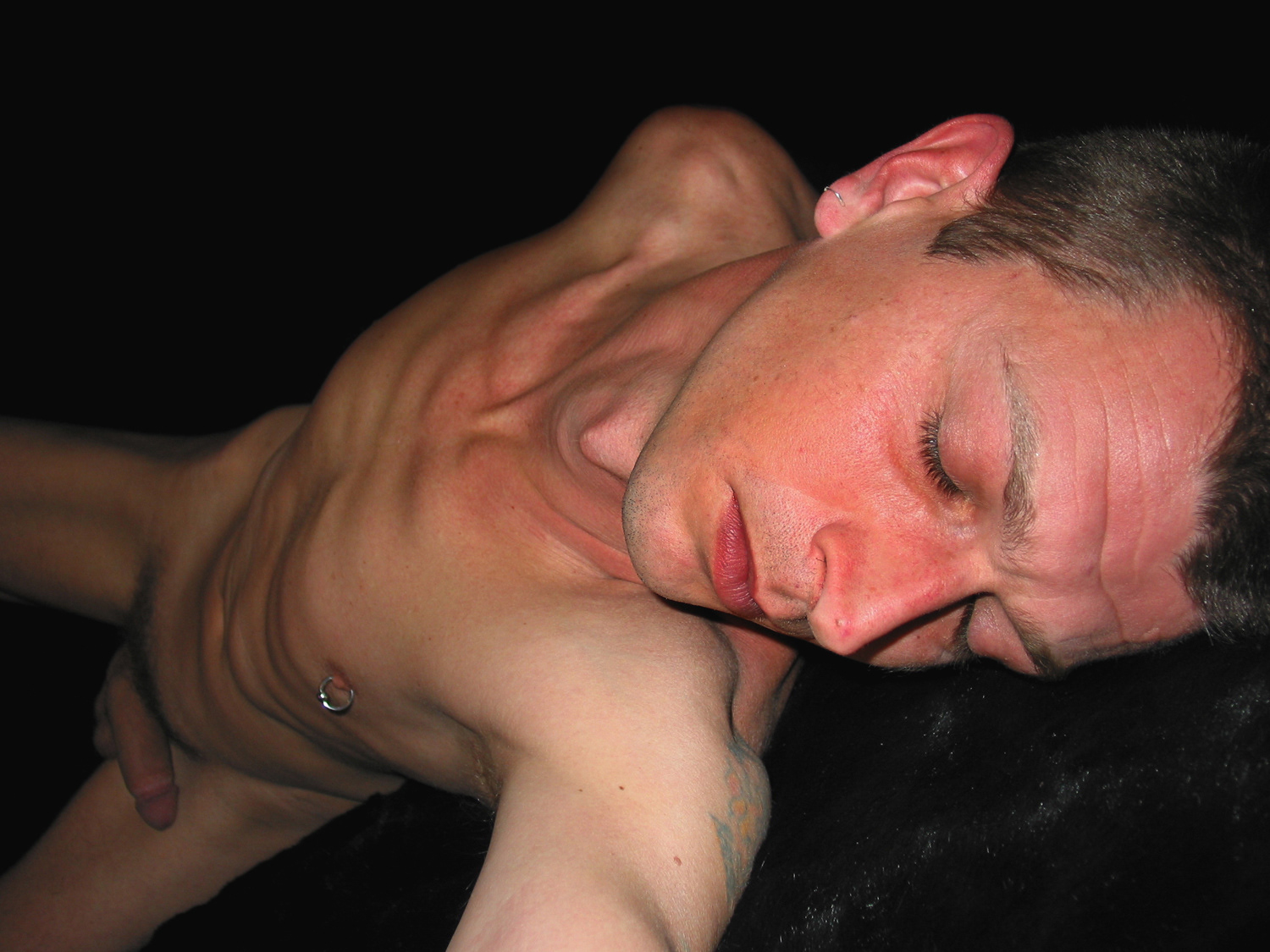



Initially conceived as a response to an exhibition proposal about the idealized classical body. John Paul Evans’s Dreaming of Dorian sequence of four related images uses the possibilities of photography for distortion and foreshortening to dramatic effect. When planning the piece, Evans was intrigued by the idea of appropriating the Dorian Gray theme, based on the novel The Picture of Dorian Gray (1890) by Oscar Wilde, a gothic melodrama dealing with the fear of ageing, which provoked scandalized protest when it appeared. The idea of ageing in a culture obsessed with the idea of youth, and its perception in representing beauty was, for Evans, particularly appealing, and he used himself as the model, giving the piece an autobiographical edge. The work was constructed as a dream sequence in which the figure is shown isolated in darkness to represent the idea of the divided self; by eliminating any horizon, Evans adds a surreal dimension to the composition. In images one and two the figure appears innocent or passive, unaware of the viewer’s gaze, the closed eyes suggesting an inward look. In images three and four, the sitter is active and aware, returning the viewer’s look with a confrontational gaze. Within the piece, Evans contrasts the idea of activity and passivity with looking and being looked at. In the final picture, the book becomes a mask, almost obscuring the face, leaving only the eyes with their piercing glance to ward off enquiry. The work was produced by a hand-held digital camera, a form of image-making new to Evans. In the event the closeness of the camera gives the work a sense of intimacy, suggested by the arm moving out toward the viewer, while the drama of the perspective adds to the dream-like quality. For Evans the technique seems to combine the qualities of pinhole photography (the old) and the video (the new). The result is an engrossing narrative in which youth, age, and the body constitute a meditation on life and death. Emmanuel Cooper from ‘Male Bodies – a photographic history of the nude’ Prestel 2003



